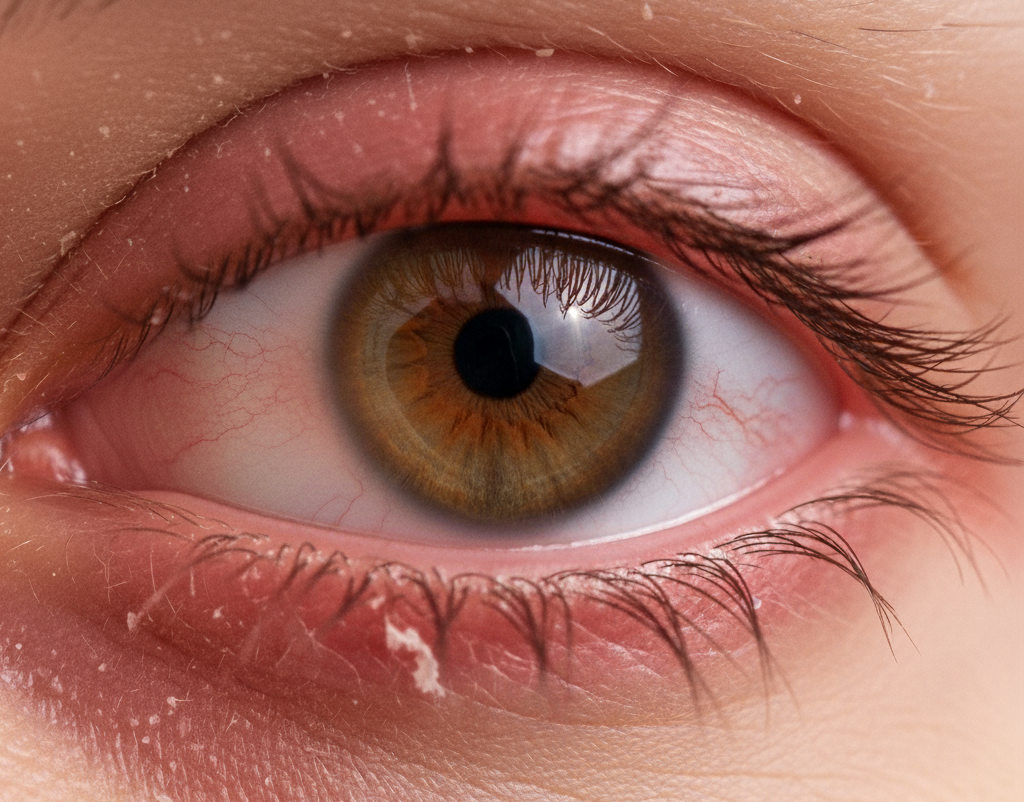
Understanding dry eye: causes, symptoms and effective treatments
Dry eye is a common yet often overlooked condition that can significantly affect daily comfort. Although the name suggests a lack of moisture, dry eye can also make the eyes water excessively. This guide explains what dry eye is, why it develops, and how it can be treated—helping you better understand your symptoms and when to seek help.
What is dry eye?
Dry eye occurs when your eyes don’t produce enough tears or when the tears you produce are not of good quality. Healthy tears protect, nourish, and lubricate the surface of the eye. When there’s a problem with this tear film, the eyes can become irritated and uncomfortable.
Common symptoms of dry eye include:
- A scratchy, gritty, or burning sensation
- Redness
- Blurred vision that improves when you blink
- Excessive watering
- Feeling like something is stuck in your eye
Although dry eye usually affects both eyes, one eye can sometimes be more uncomfortable than the other. Fortunately, dry eye rarely causes permanent damage and is often manageable with the right care.
Why does dry eye develop?
Dry eye can develop when:
- You don’t produce enough tears
- Your tears are of poor quality
- Your tears don’t spread properly across the eye
Several factors can influence how well your tear film functions. Age is one of the most common contributors—tear production naturally decreases over time, and eyelids may become less effective at spreading tears with each blink.
Common causes of dry eye
1. Ageing
As we get older, the glands responsible for producing tears become less efficient. This makes dry eye particularly common in adults over 50.
2. Hormonal Changes
Dry eye is more common in women, especially during pregnancy and after menopause. Hormonal shifts can impact how tears are produced and maintained.
3. Blepharitis and Meibomian Gland Dysfunction (MGD)
Blepharitis—an inflammation of the eyelids—is one of the leading causes of dry eye. It can be:
- Anterior blepharitis: affecting the area around the eyelashes
- Posterior blepharitis: affecting the inner lid margin, often linked with MGD
Meibomian gland dysfunction prevents the eyelids from producing the oily layer of the tear film, causing tears to evaporate too quickly.
4. Medications
Some medicines, including antihistamines and antidepressants, may reduce tear production.
5. Contact Lenses
Wearing contact lenses for long periods can irritate the eyes and worsen dry eye symptoms.
How is dry eye treated?
While dry eye cannot be cured, a range of treatments can significantly improve comfort and reduce symptoms. Once your optometrist confirms a diagnosis, they may recommend one or more of the following approaches.
1. Making the Most of Your Natural Tears
Improving blink efficiency, treating eyelid inflammation (such as blepharitis), and addressing underlying issues like MGD can help stabilise the tear film.
2. Using Artificial Tears
Lubricating eye drops, gels, and ointments help replace or supplement your natural tears. These can be used regularly throughout the day.
3. Reducing Tear Drainage
Some treatments help your tears stay on the eye surface for longer, giving more sustained relief.
In cases where medication or contact lenses trigger dry eye, adjusting the prescription or taking a break from lens wear may help.
When to seek professional advice
If you experience persistent discomfort, blurred vision, or a gritty sensation in your eyes, it’s important to speak with an eye-care professional. Dry eye is a manageable condition, and early treatment can prevent symptoms from worsening.
For tailored advice or to discuss your symptoms, call Melina Joy Opticians on 01435 868181.
This is a The Heathfield News promotion for Melina Joy Opticians